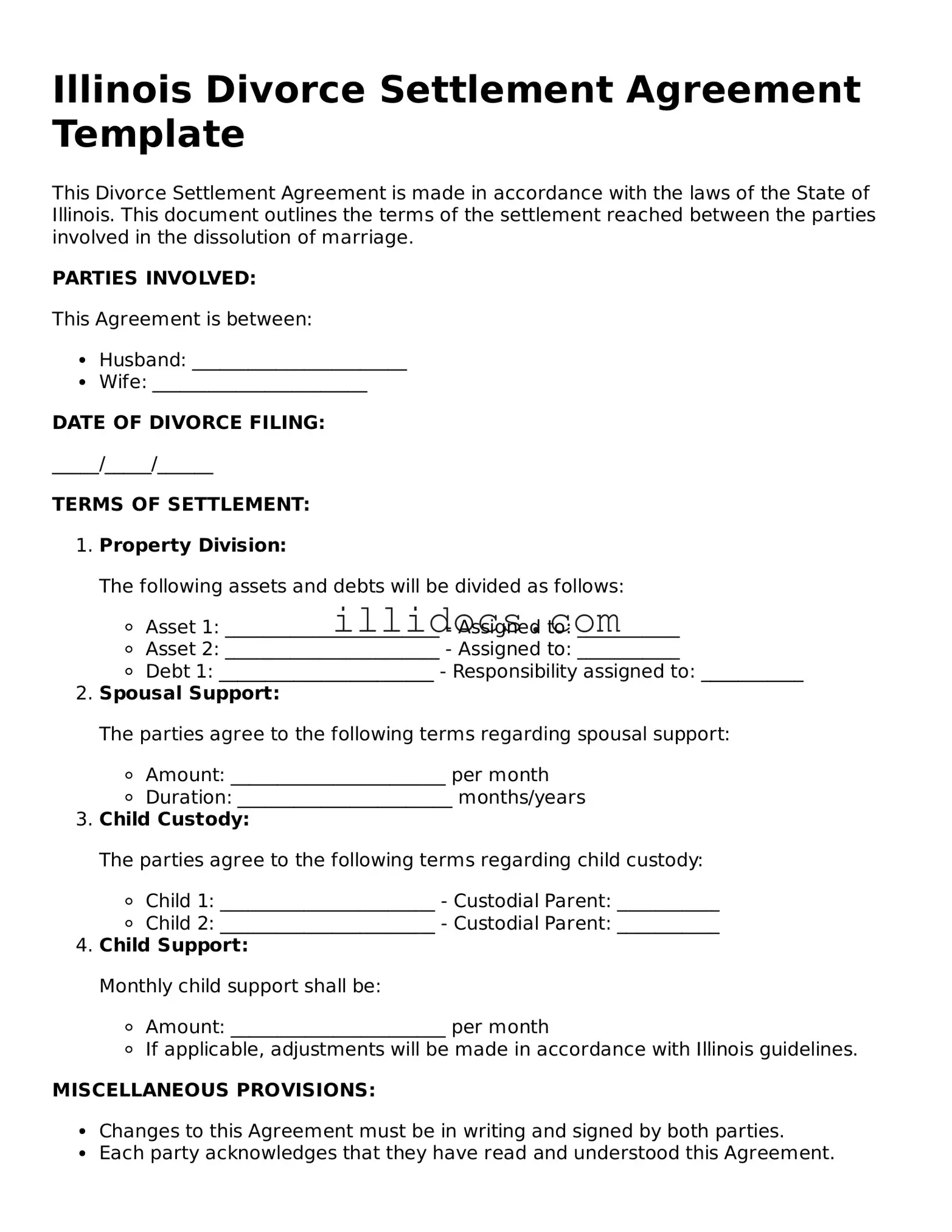What is a Divorce Settlement Agreement in Illinois?
A Divorce Settlement Agreement is a legal document that outlines the terms of a divorce between two parties. It typically covers issues such as property division, child custody, child support, and alimony. This agreement is crucial as it helps both parties reach a mutual understanding and can simplify the divorce process.
Do I need a lawyer to create a Divorce Settlement Agreement?
While it's not legally required to have a lawyer, it is highly recommended. A lawyer can help ensure that your rights are protected and that the agreement complies with Illinois laws. They can also assist in negotiating terms that are fair and reasonable for both parties.
How do I fill out the Divorce Settlement Agreement form?
Filling out the form involves providing detailed information about your marriage, assets, debts, and any children involved. Be sure to include specifics about property division, custody arrangements, and financial support. It's important to be thorough and accurate to avoid complications later on.
What happens if my spouse and I can't agree on the terms?
If you and your spouse cannot reach an agreement, you may need to go through mediation or court intervention. Mediation involves a neutral third party who helps facilitate discussions. If mediation fails, the court will make decisions based on the best interests of any children and applicable laws.
Can I modify the Divorce Settlement Agreement after it's signed?
Yes, modifications can be made, but they typically require both parties' consent. If circumstances change significantly—such as a job loss or a change in custody needs—you may need to return to court to formally amend the agreement.
Is the Divorce Settlement Agreement legally binding?
Yes, once signed and approved by the court, the Divorce Settlement Agreement becomes legally binding. This means both parties must adhere to its terms. Failing to comply can result in legal consequences, including enforcement actions.
How long does it take to finalize a Divorce Settlement Agreement?
The timeline can vary widely depending on the complexity of the case and the willingness of both parties to negotiate. If both parties agree on terms quickly, it may take a few weeks. However, if there are disputes, it could take several months or longer to finalize the agreement.
